When Ford announced the new compact Maverick pickup truck, we thought of it as competition of the awesome new Hyundai Santa Cruz. It was entering a new segment with a truck smaller than it has built since the old compact Ranger left our world in 2011. But then Ford announced the base price and the standard powertrain. That was the finishing move.
But a crew cab pickup truck that starts at $21,490 with destination and gets 40 mpg in the city has to also be a good vehicle, otherwise this is all academic. Fortunately it is good, and while we’re aware we’re spoiling the ending, the Maverick will be our go to recommendation for a $20,000 truck, small crossover, or even small car. It’s just that good.
Maverick shares the underpinnings Ford’s Bronco Sport and Escape. Despite that, each vehicle built on that platform feels unique, and Maverick is no different. While it drives like a crossover, it doesn’t feel like either of those Ford products.
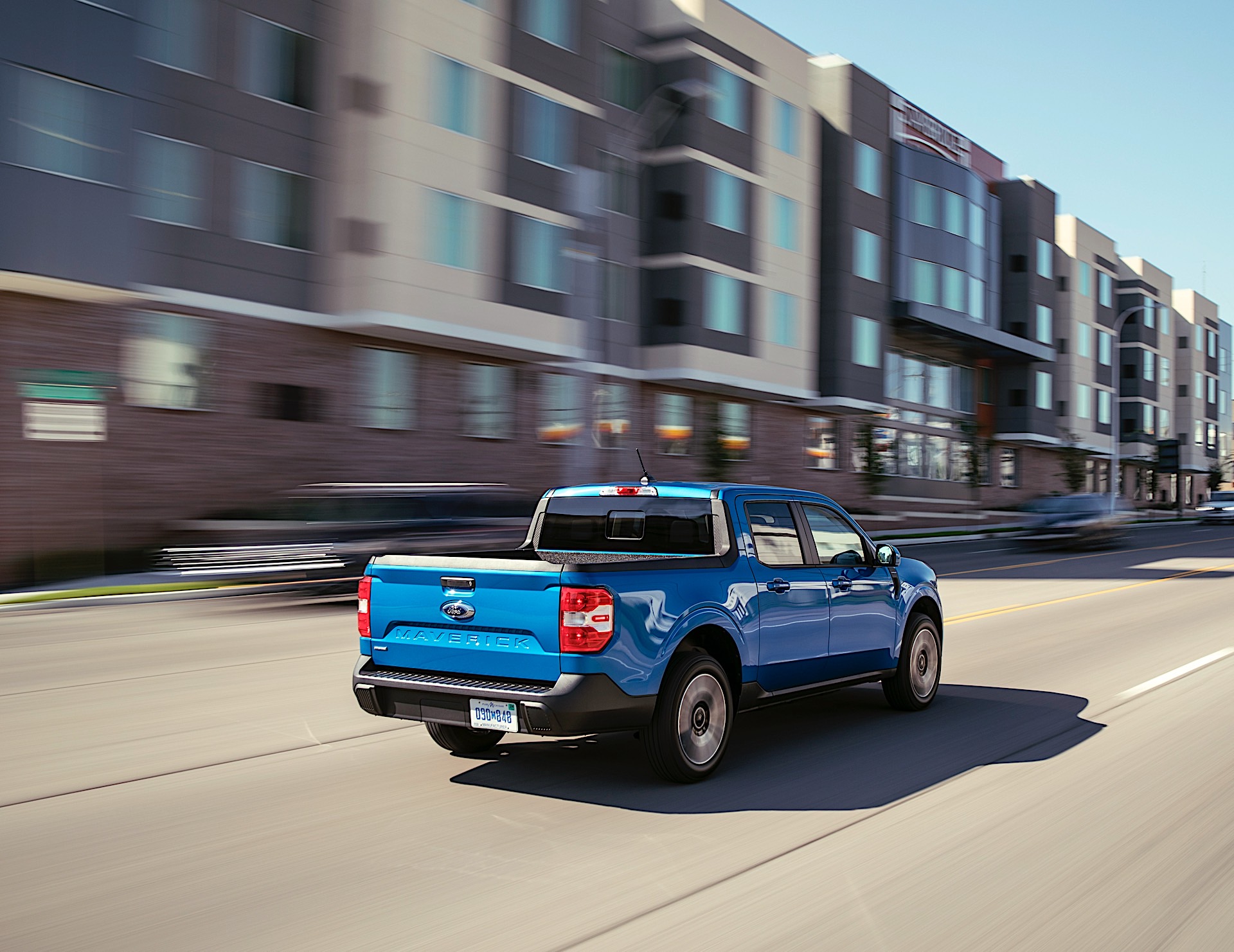
The hybrid is the standard powertrain, and it makes 162 horsepower and 155 lb-ft of torque. It’s only, unfortunately, available in front-wheel drive for the hybrid and power is sent to those front wheels by a CVT transmission.
The crew cab only configuration can seat 5 people comfortably, with taller folks being a little cramped in the back on long journeys. But it’s still a good amount of space considering the size of the vehicle.
There is a 4.5-foot bed that can, when loaded properly, accommodate an 8-foot by 4-foot piece of plywood. The tailgate has adjustable heights, helping balance the load. Maximum payload on all models is a healthy 1,500 pounds. That’s over 60 bags of mulch.
The bed is also immensely useful. Called Flexbed, Ford has designed the bed of the truck to accommodate a litany of accessories. You want a bike rack? Check. You need storage for sporting equipment? Check. You want bed lights? Check.
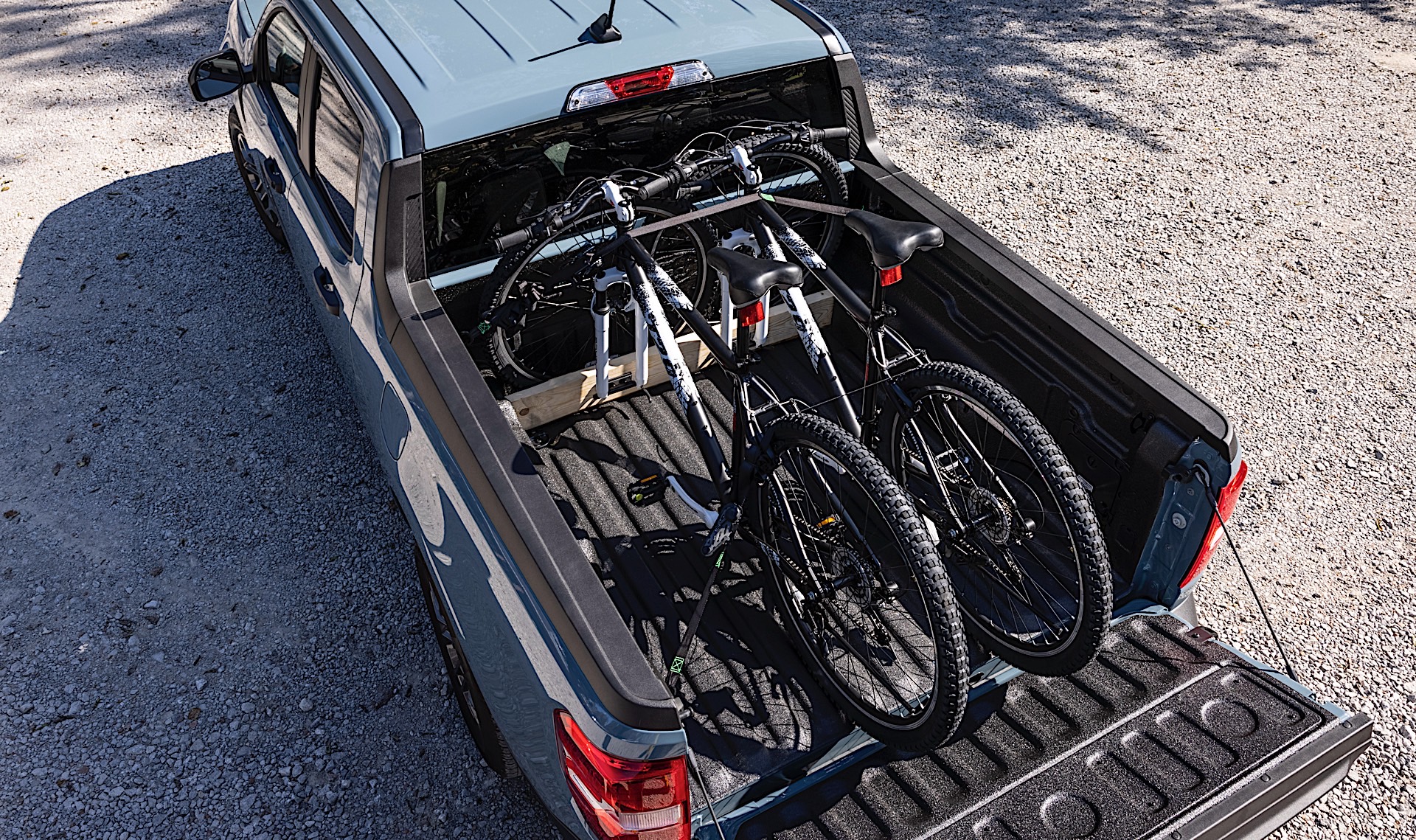
Where Ford is really clever is that they’ve made the truck, and the bed, DIY-able. There are QR codes throughout the truck that, once scanned, take you to a Ford website to show you how to build your own accessories. They’ll even tell you what you need to go buy at Lowe’s or Home Depot.
Don’t want to do the work? Ford will sell you the accessories. But if you want to put in the elbow grease, Ford will walk you through how to do it yourself. Brilliant.
The bed also comes prewired for additional 12-volt accessories so you don’t have to split wires or do shoddy electrical work. Located on both sides of the bed, the 12-volt plugs attach to lighting or anything else you might want to hook up.
Our biggest complaint about the bed is the tailgate, and it’s lack of dampening. It’s 2021, a tailgate shouldn’t crash down when it’s unlatched and the person lets go of the gate. It’s an odd place to cost cut and makes the gate feel cheaper than it is.
Inside there is space for full sized water bottles in most of the cup holders, especially in the doors. In fact, there are like 6 cup holders for up front passengers. There’s tons of storage, including a nifty little slot next to the infotainment screen.
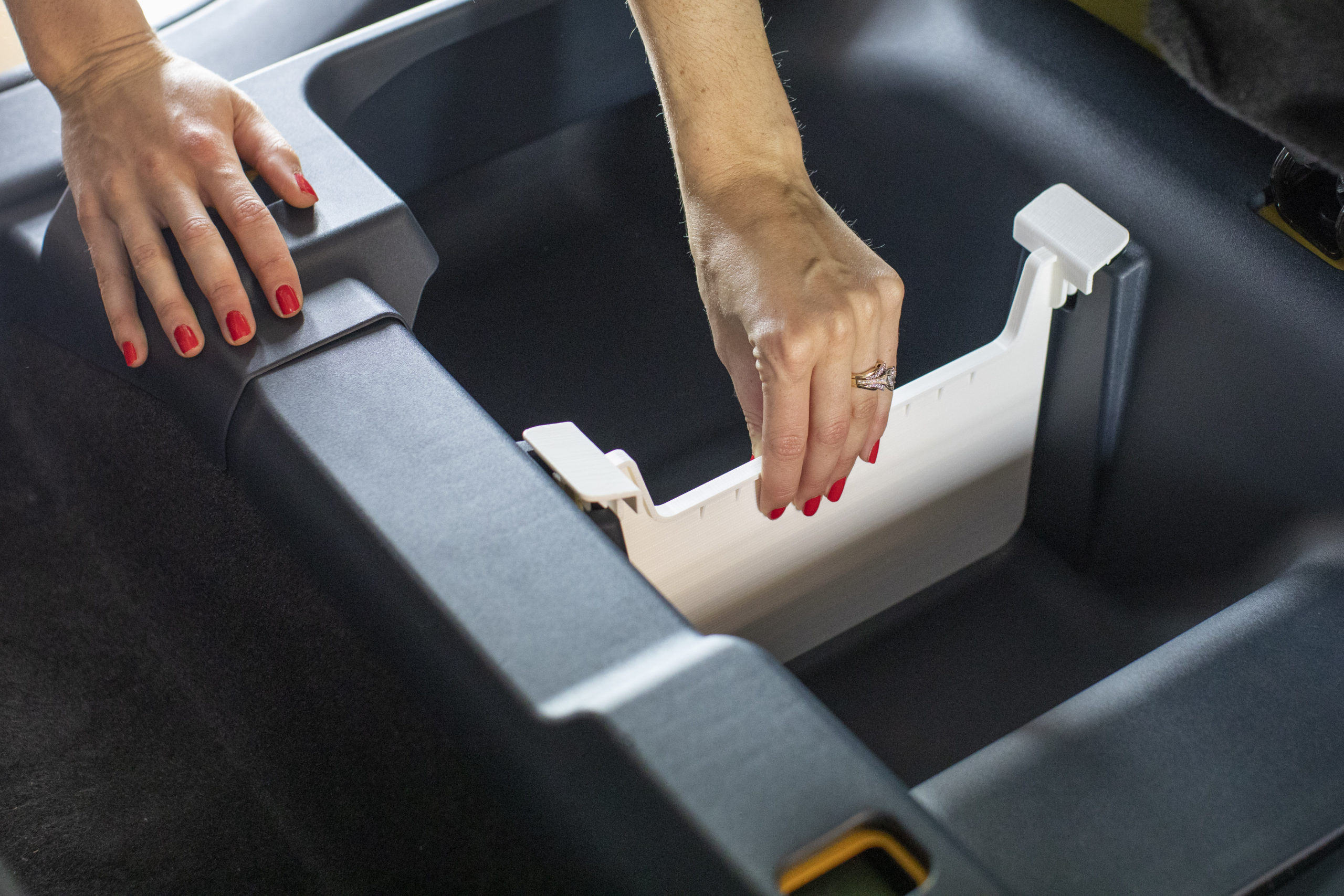
In the rear, and in the under seat storage, there is something called F.I.T.S. It’s for Ford Integrated Tether System, and it’s a framework for accessory builders — and at-home DIYers — to 3D print accessories like cup holders, storage bins, and tablet holders. Want a cup holder with your logo on it? 3D print it.
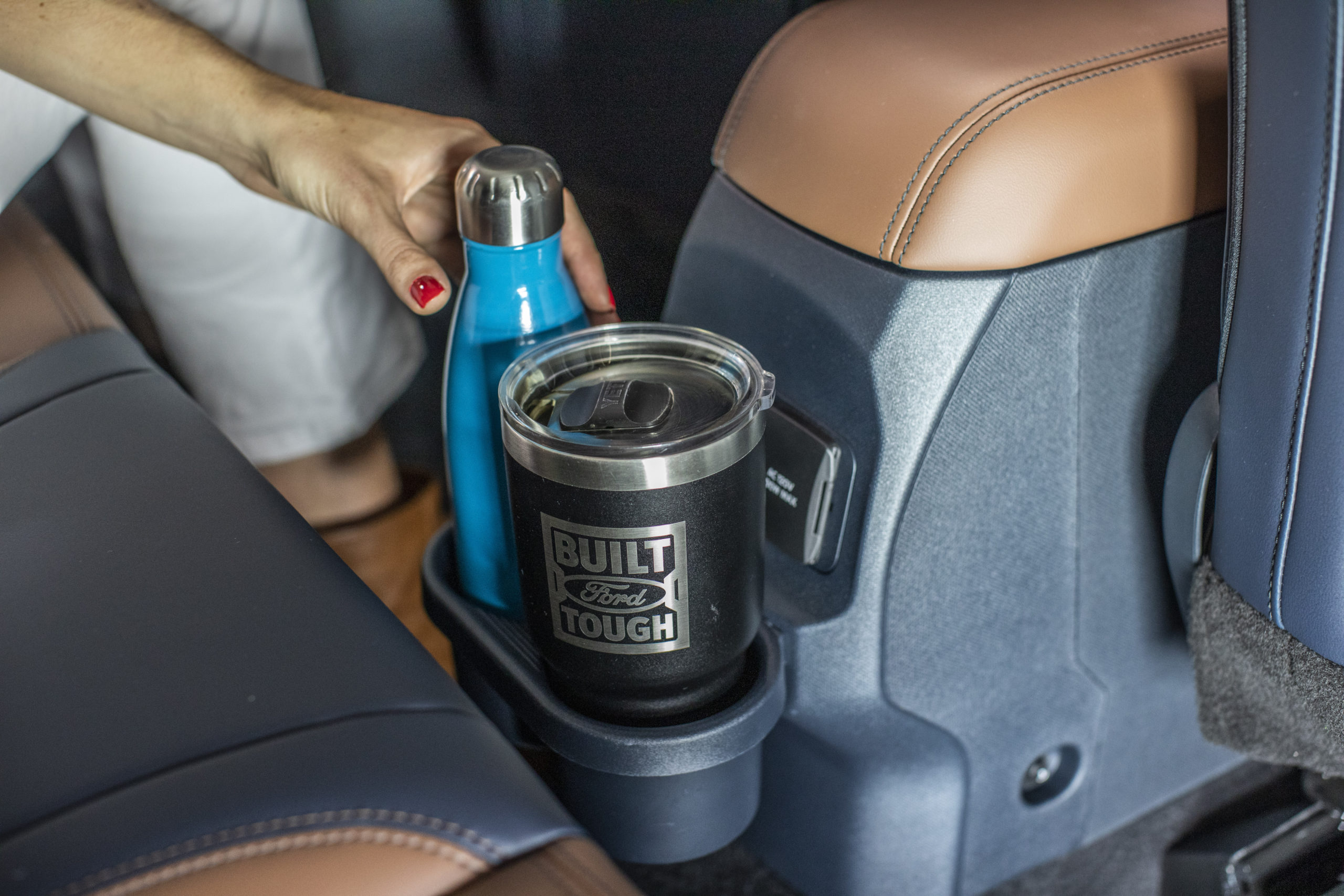
(Before anyone starts to think that they’ll start 3D printing accessories to sell, keep in mind that Ford’s system is patented and you’ll have to pay the Blue Oval a licensing fee if you want to do that.)
Standard on all models is an 8-inch infotainment screen that supports Apple Car Play and Android Auto. Automatic single zone climate control is also standard. Power windows and door locks are standard (though powered mirrors are not). LED headlights are also standard across the range. Safety features like automatic high beams and automatic emergency braking is also standard.
What is not standard, interestingly enough in 2021, is cruise control. We’re not talking adaptive cruise control, but regular, basic cruise. We’d rather give up the power windows for cruise control, if it were us, as we’d use cruise way more often than the power windows (especially with automatic climate control).
The base truck though looks fantastic with the standard steel wheels, and if it weren’t for the lack of cruise control we’d probably just buy the base XL and be happy. But we take highway drives and honestly, it’s a creature comfort we can’t live without.
Upgrades include a better sounding stereo, different interior materials, ActiveX seating material (not like the Microsoft gaming drivers), adaptive cruise control, power seats, and more.
As mentioned before, all Mavericks have 1,500 pounds of payload capacity, but all hybrid Mavericks can also tow up to 2,000 pounds. That’s a pretty heavy duty riding lawn mower and trailer, or a pair of Jet Skis, or even a small camper.
The Maverick hybrid doesn’t feel particularly quick off the line, but it accelerates quick enough. When you add payload or a trailer, you don’t seem to lose much grunt, which means that 200 lb-ft of torque really starts to pay dividends under load.
Our tow loops were quite short, so getting a good fuel economy reading from the onboard computer is an effort in futility, but regardless the computer on the tow trucks was still recording economy in the 30+ mpg range. We’ll be sure to tow when we get one in for a week of testing to know for sure.
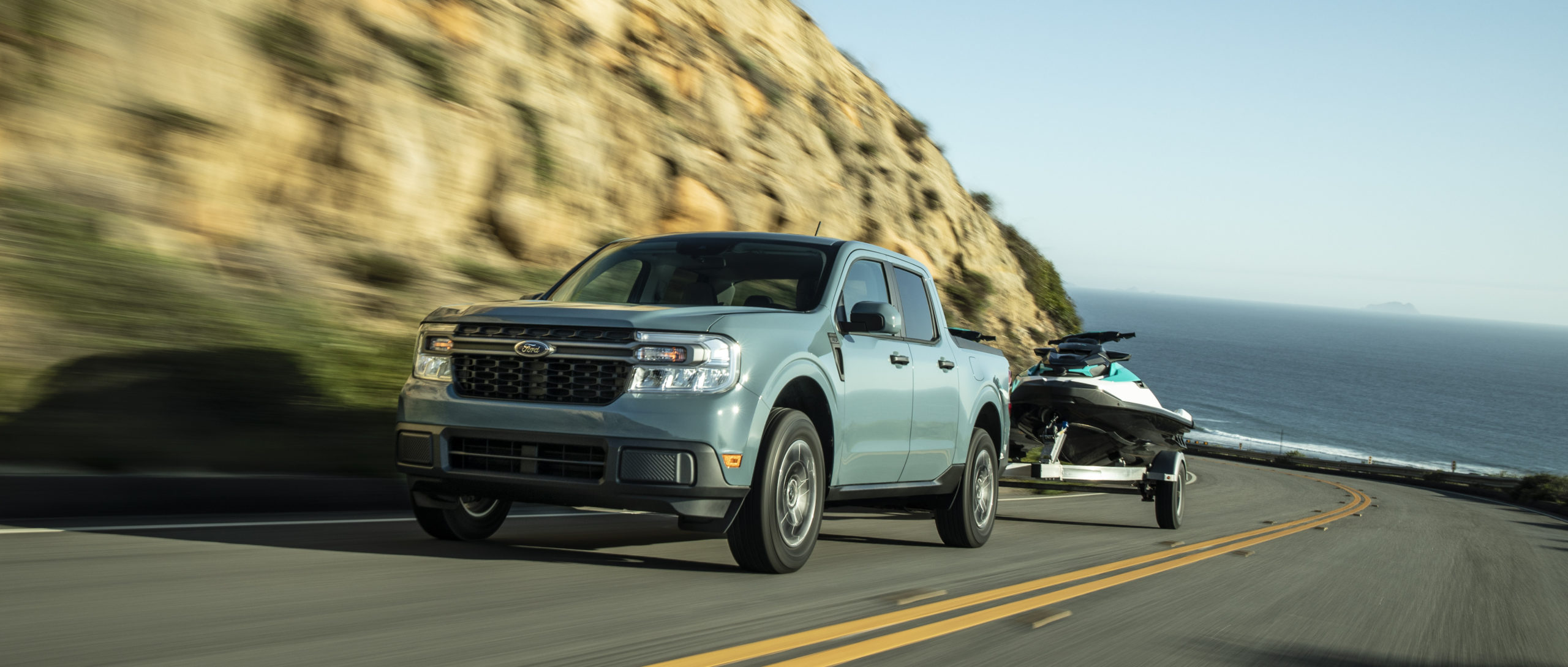
The Maverick doesn’t drive like a truck, but it also doesn’t drive like a sports car. The CVT works fine, but we’d still rather see a geared transmission on the hybrid like on the gas-only truck. But it’ll hustle through some bends if you really want to.
On the highway though it’s surprisingly refined and handles bumps well. A unibody vehicle will always handle the day to day more comfortably than a body on frame vehicle.
Ford expects the XLT trim, with some upgraded materials and more available options, to be the volume trim on Maverick. We agree, as we can’t seem to find many reasons to upgrade to the Lariat trim unless there’s some features you absolutely want.
A fully loaded Lariat hybrid First Edition is $32,360 with delivery. That’s still solid value for a 40 mpg vehicle that can tow 2,000 pounds, 60 bags of mulch, and do the school run with ease.
In fact, the Maverick ticks so many boxes its hard to not recommend it for any vehicle in that $20,000 to $25,000 price range. The standard hybrid delivers fuel economy similar to gasoline-powered compact cars. Compact crossovers won’t get anywhere near the fuel economy unless you spring for expensive hybrid versions.
Maverick isn’t a truck for DIYers. It’s a truck for anyone who wants a truck but doesn’t need a F-150. It’s a crossover for anyone who wants an inexpensive, fuel efficient crossover. It’s a compact sedan for anyone who is looking for a $25,000 compact sedan.
It’s not without faults (tailgate dampening, cruise control lacking on XL model, some materials don’t feel the greatest), but you can forgive those for the price. Plus, it provides more utility than a crossover or a sedan for the same price, and you don’t sacrifice fuel economy.
Ford also knows that once you live with the versatility of a pickup truck, you continue to buy pickup trucks. Maverick is a smart play for getting new people into Ford, getting people into pickup trucks, and retaining them for life.
It’s a good enough product they could actually pull it off.
